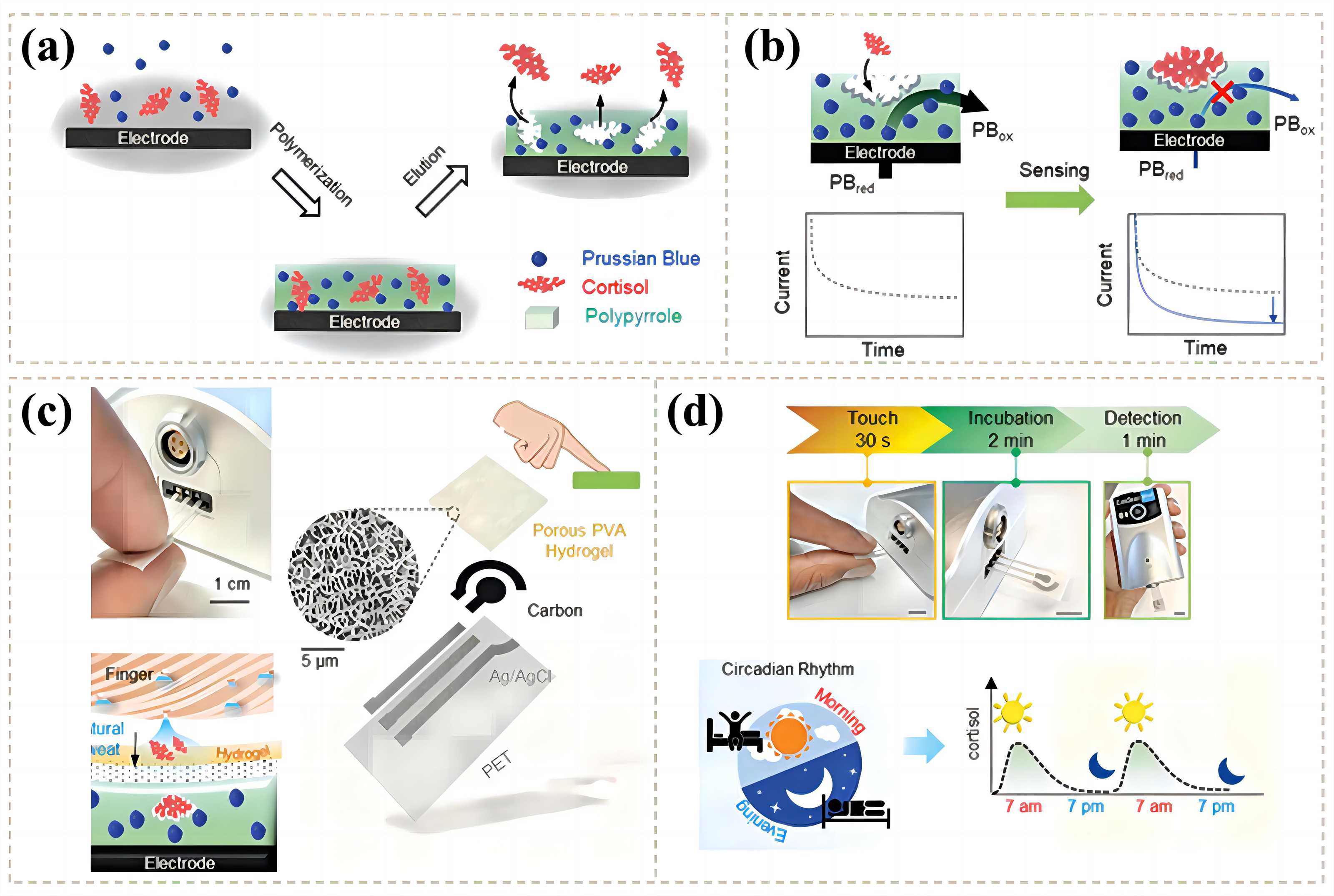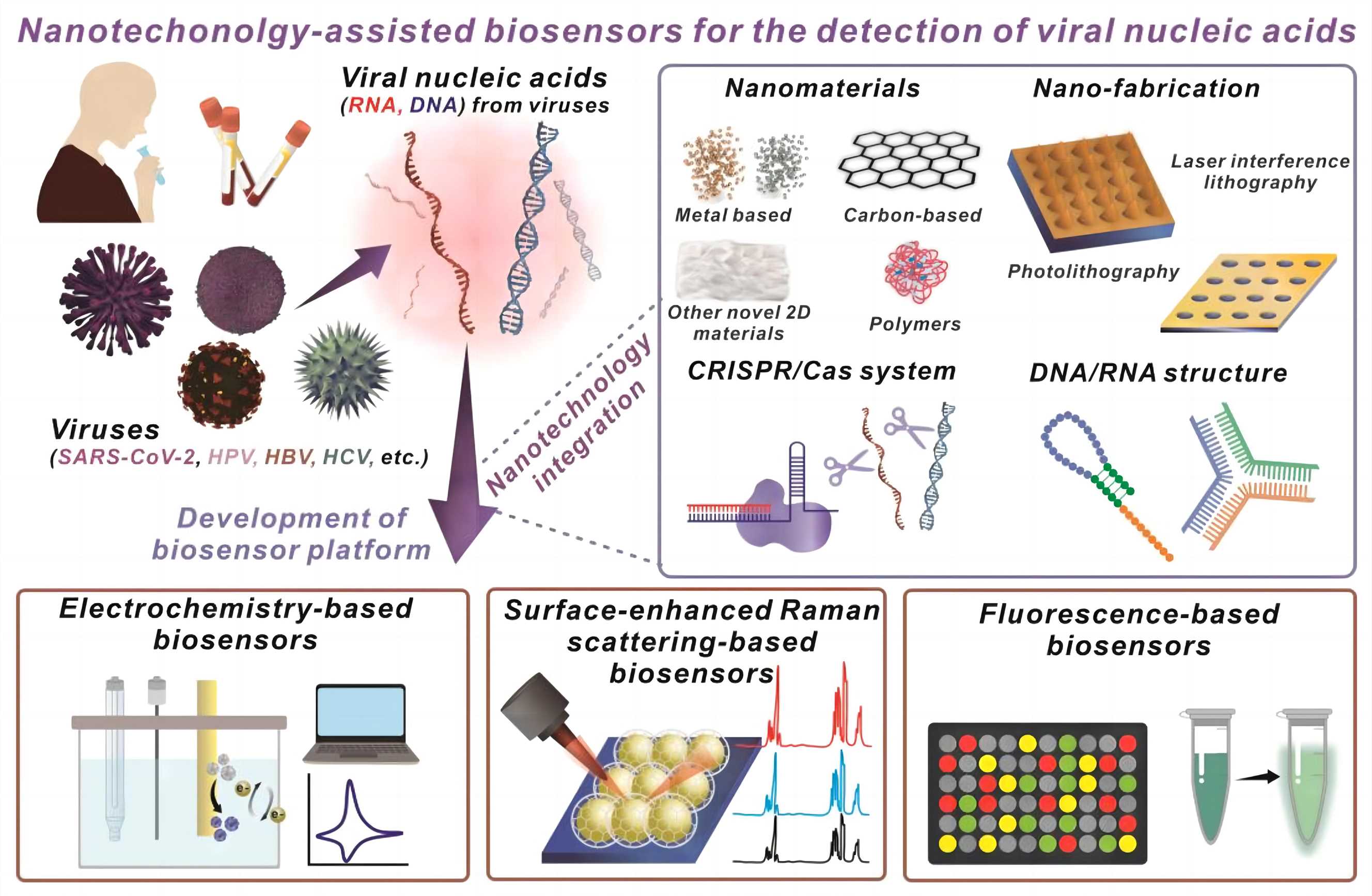Small molecules such as ATP, ions, and hydrogen peroxide (H2O2), cortisol play important roles in the regulation of various physiological and pathological processes such as glucose levels, blood pressure, and carbohydrate metabolism. Their aberrant levels have been found to be significantly indicative in various clinical diagnoses. Thus, the measurement of small molecule (or other similar metabolites) levels in the body is an important diagnostic tool, both in clinical settings and during certain stress-intensive activities. Recent years, the electrochemical biosensor technology that are easy to use and enable the quick detection of small molecules of interest have been the focus of research.
Electrochemical Aptasensors for K+ Detection
Scientists developed a K+ aptasensor utilizing the digestion reaction of RecJf exonuclease. A single DNA probe with stem-loop structure was designed and located on the gold electrode through covalent thiol-gold bonds. The probe contained an anti-K+ aptamer sequence, which formed a G-quadruplex structure in the presence of K+.
Electrochemical Biosensor for Monitoring Cortisol Using MIP
The sensor was fabricated using molecularly imprinted polymers (MIP) and cortisol was chosen as a model analyte. Cortisol imprinted polymer films were prepared by electropolymerizing pyrrole on an electrode surface in the presence of cortisol. Electrochemical over-oxidation of polypyrrole (PPy) was performed for the controlled release of cortisol templates and to create cortisol specific imprinting sites. The sensor exhibited a detection limit of 1 pM L−1 for cortisol.
 Fig.1 Schematic illustration of MIP-based sensor for cortisol sensing.1, 3
Fig.1 Schematic illustration of MIP-based sensor for cortisol sensing.1, 3
A DNA Nanostructure-based Universal Biosensing Platform
The occurrence and prognosis of many complex diseases is associated with the variation of various molecules, including DNA at the genetic level, RNA at the regulatory level, proteins at the functional level and small molecules at the metabolic level. Thus, a single platform is highly desirable to be developed for detecting multilevel biomarkers for early-stage diagnosis. Scientist reported a protocol on DNA-nanostructure-based programmable engineering of the biomolecular recognition interface, providing a universal electrochemical biosensing platform for the ultrasensitive detection of DNA/RNA, proteins, small molecules and whole cells.
 Fig.2 Schematic representation of nanotechnology-enhanced biosensors for viral nucleic acid detection.2, 3
Fig.2 Schematic representation of nanotechnology-enhanced biosensors for viral nucleic acid detection.2, 3
References
- Zhang, Yanke, et al. "Recent Advance in Cortisol Immunosensing Technologies and Devices." Chemosensors 11.2 (2023): 90.
- Choi, Hye Kyu, and Jinho Yoon. "Nanotechnology-assisted biosensors for the detection of viral nucleic acids: An Overview." Biosensors 13.2 (2023): 208.
- Distributed under Open Access license CC BY 4.0, without modification.
For Research Use Only.

